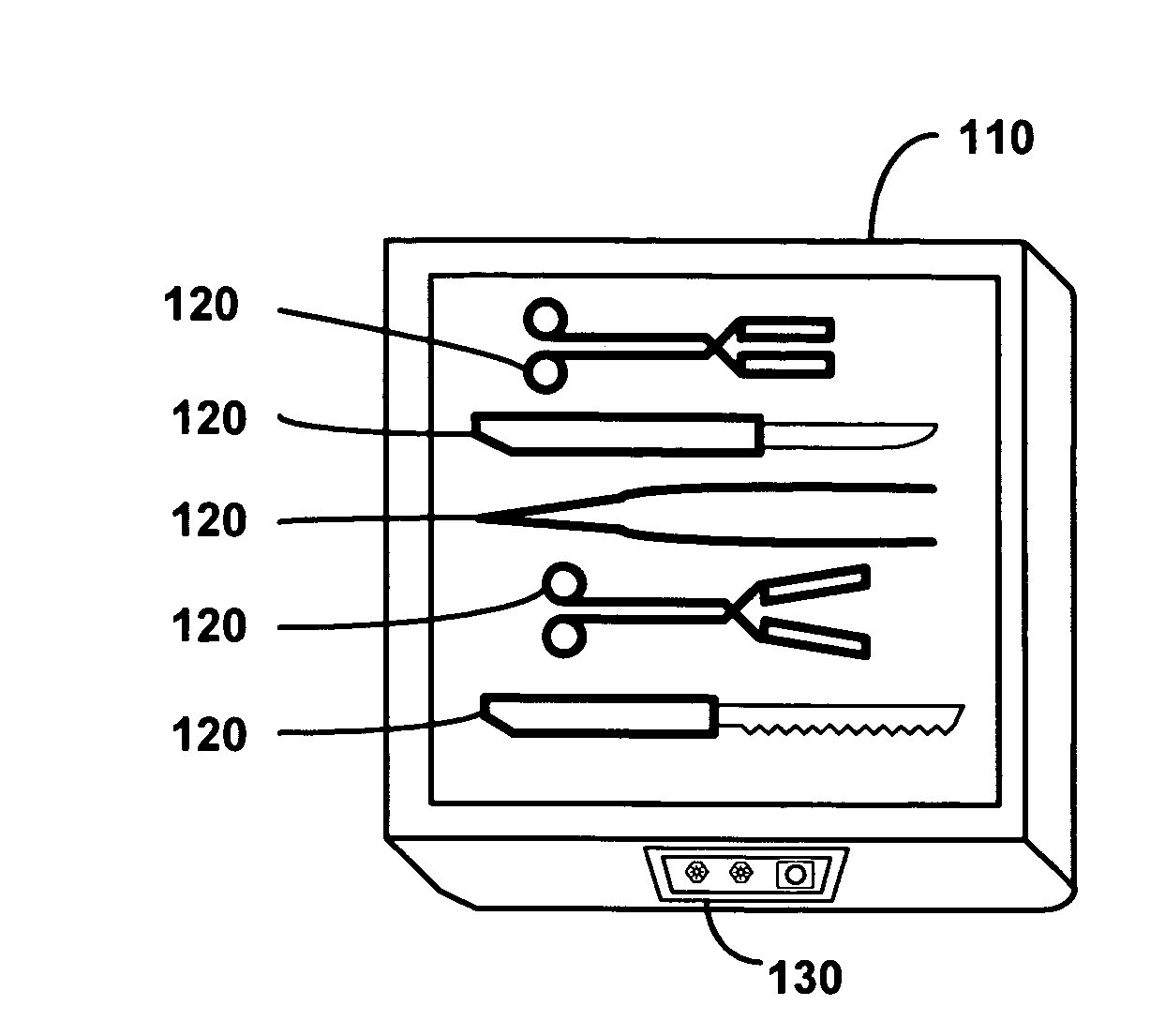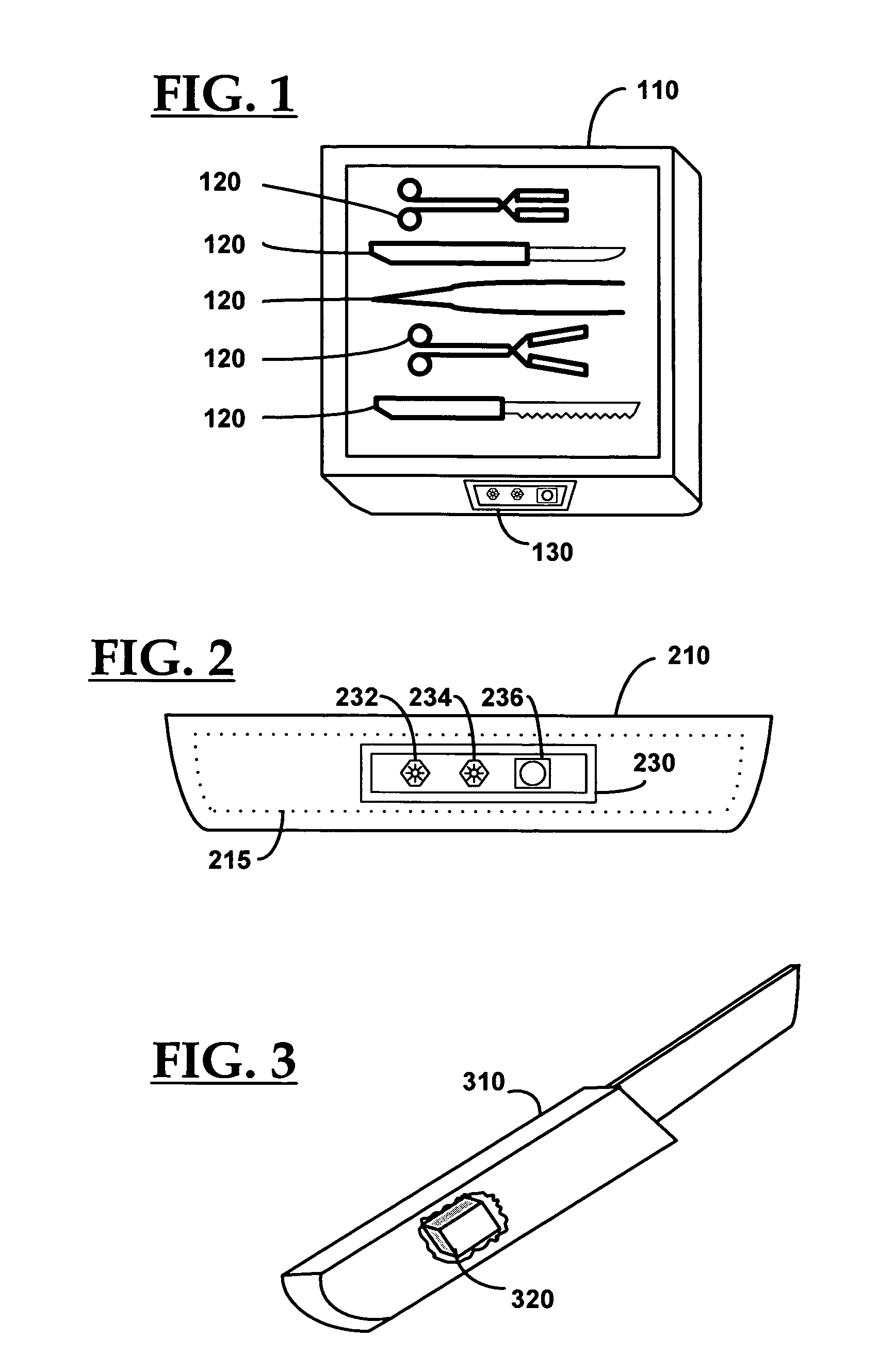Smart instrument tray RFID reader
a technology of instrument tray and reader, which is applied in the direction of instruments, prostheses, burglar alarm mechanical actuation, etc., can solve the problems of overly reliant on human interpretation for performing the necessary functions, surgical instruments that suffer wear and tear, and eventually reach the end of their life cycle, so as to reduce handling costs and accurate and rapid tracking of instruments
- Summary
- Abstract
- Description
- Claims
- Application Information
AI Technical Summary
Benefits of technology
Problems solved by technology
Method used
Image
Examples
Embodiment Construction
[0032]The following description is intended to convey a thorough understanding of the invention by providing specific embodiments and details involving automating and adding value to medical and surgical instruments, and instrument kits. It is understood, however, that the invention is not limited to these specific embodiments and details, which are exemplary only. It further is understood that one possessing ordinary skill in the art, in light of known systems and methods, would appreciate the use of the invention for its intended purposes and benefits in any number of alternative embodiments, depending upon specific design and other needs.
[0033]Referring to FIG. 1, a surgical instrument tray 110 and a plurality of surgical instruments 120 are illustrated in accordance with one exemplary embodiment of this invention. As shown in FIG. 1, the surgical instrument tray 110 comprises a box-like structure having a hollowed body and a roughly planar top surface surrounded on its perimeter...
PUM
 Login to View More
Login to View More Abstract
Description
Claims
Application Information
 Login to View More
Login to View More - R&D
- Intellectual Property
- Life Sciences
- Materials
- Tech Scout
- Unparalleled Data Quality
- Higher Quality Content
- 60% Fewer Hallucinations
Browse by: Latest US Patents, China's latest patents, Technical Efficacy Thesaurus, Application Domain, Technology Topic, Popular Technical Reports.
© 2025 PatSnap. All rights reserved.Legal|Privacy policy|Modern Slavery Act Transparency Statement|Sitemap|About US| Contact US: help@patsnap.com



